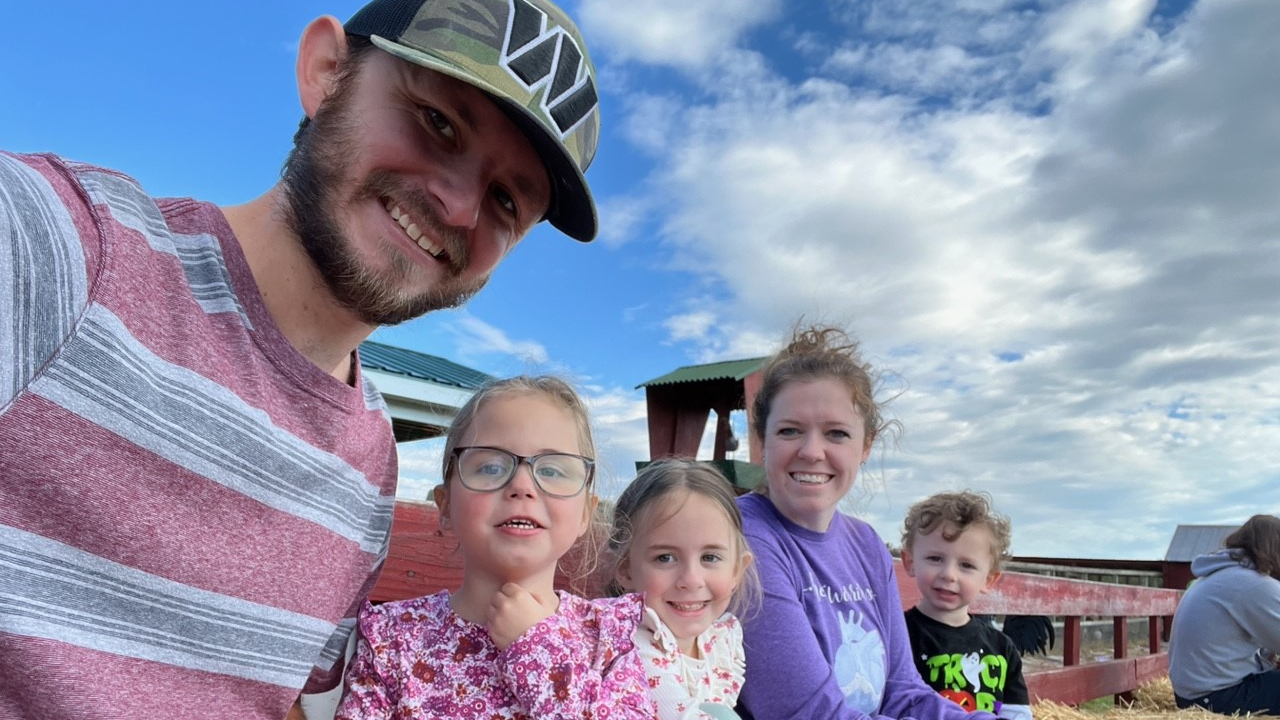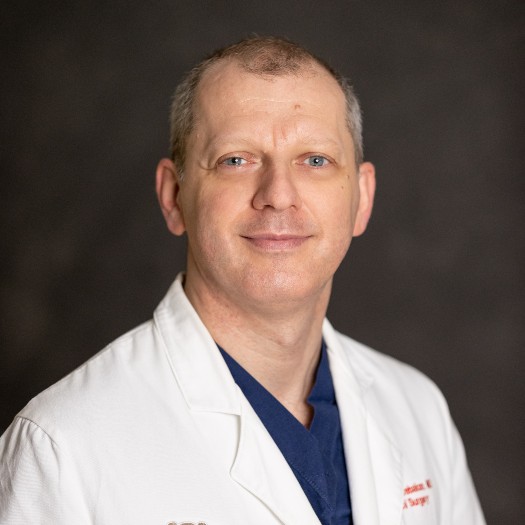
Tiny Stents and Big Adventures: Hybrid Surgery Gives Cayden's Heart a Chance

Five-year-old Cayden loves to work on her favorite puzzles and go to preschool each day with her twin sister Reagan. Watching her do such typical 5-year-old activities makes it hard to believe this joyful, wise little girl had such a harrowing start to life.
“She’s a miracle,” says Casey Lyle, Cayden’s mom. A few weeks after her routine 20-week ultrasound spotted something strange with one baby’s heart, Casey and her husband Dillon found themselves in a room with Mary Donofrio, M.D., medical director of Prenatal Cardiology at Children’s National Hospital in Washington, D.C. Dr. Donofrio explained Cayden had a complex set of congenital heart defects: hypoplastic right ventricle, double inlet left ventricle and critical coarctation of the aorta. These conditions would require careful planning to safely deliver both babies and a major heart surgery for Cayden soon after birth. Without surgery, Cayden’s heart would not be able to pump enough blood to her organs for her to stay alive.
A Tiny Newborn with an Uncertain Future
Cayden and Reagan were born 6 weeks early, with Cayden weighing less than four pounds – closer in size to an average cantaloupe than an average newborn. Her low birth weight and complex congenital heart disease together put Cayden at extremely high risk for complications, or even death, from open-heart surgery so soon after birth. But she needed surgery to survive.
Two heart experts at Children’s National came to the Lyles with another option. Can Yerebakan, M.D., associate chief of Cardiac Surgery and Joshua Kanter, M.D., director of Interventional Cardiology, offered to try a cutting-edge, less-invasive hybrid procedure that would temporarily improve Cayden’s blood flow and take pressure off her heart. This would give Cayden’s lungs and other organs time to get stronger before major open-heart surgery.
Choosing the hybrid procedure — the first of which doctors performed less than 24 hours after she was born — turned out to be the best decision the Lyles could have made for their daughter.
Departments that Treated
Care Team
“Truly in my own heart, I do not believe Cayden would be alive today without Dr. Yerebakan and those early hybrid procedures,” Casey says.

Cardiac Surgery and Catheterization Come Together for High-Risk Newborns
The hybrid HLHS surgical approach combines traditional surgery and a minimally invasive, catheter-based procedure to place a tiny stent into the ductus arteriosus of an infant with only one good pumping chamber in the heart. The stent keeps the ductus open after the baby is born. Normally, that ductus promotes blood flow between mother and baby before birth and closes naturally after a child is born. Holding it open gives infants with heart conditions like Cayden’s the chance to receive better blood flow even when the heart itself can’t pump enough.
This isn’t a permanent fix. Single ventricle conditions like Cayden’s require at least three more open-heart surgeries using the heart-and-lung machine to permanently repair the heart. But the hybrid HLHS surgery gives these fragile babies extra time to build stronger lungs and organs before the surgeries that will be much harder on them.
Making the Impossible Possible
Drs. Yerebakan and Kanter have performed more hybrid procedures together than just about anywhere else in the United States. And they are the only team in the country using a special toothpick-sized flexible stent in the ductus. They worked directly with the U.S. Food and Drug Administration to bring these right-sized tiny stents to the U.S. from Europe.
Cayden was one of the first babies to benefit from this cutting-edge approach. Since then, more than 50 high-risk babies, some born as early as 28 weeks of gestation or weighing as little as 2 pounds at birth, have also benefited from hybrid procedures. Soon, the team will start performing some hybrid procedures with catheters only, preventing an incision in the chest. This will allow the smallest babies to get the care they need with fewer open-chest procedures.
The long-term data for patients who undergo hybrid surgical procedures shows the strategy may also improve recovery from the surgery that comes next, too.
.jpg?h=3024&iar=0&w=4032)
This has the team exploring the idea of offering hybrid approaches to more babies with similar congenital heart conditions instead of recommending open-heart surgery as soon as possible.
"Children’s National is one of the only places in the country that will take cases like Cayden’s,” Casey says. “Most hospitals would not have attempted this lifesaving surgery on her because she was so small.”

Cayden’s Next Adventures
In the years since Cayden’s urgent hybrid surgical procedures, doctors have completed four more open-heart surgeries and several catheterizations. With the last surgery more than a year ago, she hasn’t been hospitalized for her heart since.
Her family says her repaired heart has given Cayden more opportunities to thrive, including the chance to start preschool last fall with her sister. For the first time, the family is planning adventures like ski trips and are eagerly awaiting the start of kindergarten. The Lyles say the care and support they received from Children’s National, from before Cayden was even born to now, have helped make this bright future possible.




